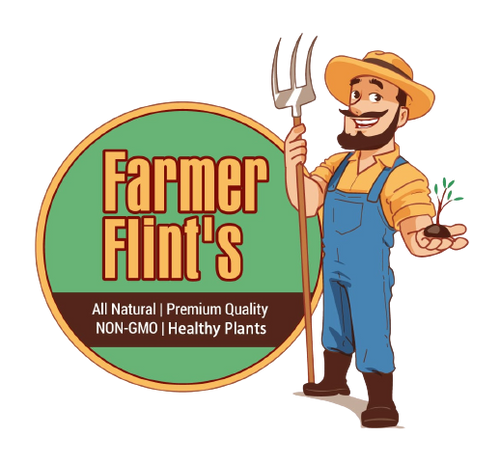In a well-managed vegetable garden, the role of mulch extends far beyond appearance. It serves as a natural barrier that helps conserve water, reduce weeds, improve soil health, and regulate soil temperature. When you select the best organic mulch for vegetable garden beds, you’re making a choice that can lead to healthier plants and more bountiful harvests.
Organic mulches, made from natural, biodegradable materials, gradually enrich the soil as they break down. Whether you're cultivating a small backyard plot or tending a larger vegetable garden, understanding your mulching options will help you make the most of your growing season.
Why Organic Mulch Matters in a Vegetable Garden
Organic mulch supports the health of your garden in multiple ways. It not only boosts productivity but also cuts down on maintenance. These natural materials—like straw, compost, leaves, and bark—form a protective layer over the soil.
Here are a few of the key advantages:
-
Retains moisture: Slows evaporation, helping plants get consistent access to water.
-
Suppresses weeds: Blocks sunlight from reaching weed seeds.
-
Improves soil quality: Adds organic matter and nutrients over time.
-
Protects roots: Maintains stable soil temperatures.
-
Reduces erosion: Shields the soil from heavy rain and wind.
Unlike synthetic options, organic mulches break down naturally and support soil life, making them ideal for gardens where long-term health is the goal.
What to Keep in Mind When Selecting Organic Mulch
Not all mulches serve the same purpose. Different crops, climates, and soil types call for different mulching approaches. Before choosing a material, consider:
-
Decomposition rate: Faster-decomposing mulches feed the soil quickly but require regular replenishing.
-
Nitrogen balance: Some mulches, especially those high in carbon like wood chips, can draw nitrogen from the soil.
-
Local availability: Choose what’s easy to source in your area.
-
Pest control: Be mindful of materials that may attract slugs, insects, or rodents.
-
Crop compatibility: Certain vegetables benefit more from specific mulch types than others.
Top Choices: Best Organic Mulch for Vegetable Garden Beds
1. Compost
Compost stands out as one of the most nutrient-rich mulches available. It’s well-suited for nearly every type of vegetable garden.
Advantages:
-
Supplies essential nutrients
-
Improves soil texture
-
Encourages microbial activity
-
Easy to apply and incorporate into soil
Drawbacks:
-
May require a composting setup or purchase from a supplier
-
Can develop a crust if spread too thick
Application: Spread a 1–2 inch layer over the soil surface, avoiding direct contact with plant stems to reduce the risk of rot.
2. Straw
Straw is a widely used mulch in vegetable gardens due to its lightweight nature and affordability.
Advantages:
-
Excellent for moisture retention
-
Prevents weed growth
-
Breaks down gradually
Drawbacks:
-
May blow away in strong winds
-
Can attract pests like slugs
-
Seed contamination risk if hay is used instead
Application: Layer 3–6 inches around crops, ensuring it stays clear of plant stems. Look for seed-free straw, such as wheat straw, for best results.
3. Shredded Leaves
Shredded leaves are a free and effective option, particularly in the fall when they’re easy to collect.
Advantages:
-
Abundant and easy to gather
-
Decompose into nutrient-rich humus
-
Enhance soil structure
Drawbacks:
-
Unshredded leaves can form a dense mat
-
Some leaves may contain natural compounds that inhibit growth
Application: Shred leaves before applying a 2–4 inch layer. Fluff the material occasionally to maintain airflow and prevent compaction.
4. Grass Clippings
Fresh grass clippings are another readily available material, ideal for nitrogen-loving plants.
Advantages:
-
High in nitrogen
-
Readily accessible
-
Breaks down quickly
Drawbacks:
-
Can mat together and smell if applied too thickly
-
May contain herbicides or pesticides from treated lawns
Application: Apply in thin layers (1–2 inches) and allow each layer to dry before adding more. Use untreated clippings only.
5. Wood Chips and Bark Mulch
Wood chips are more suitable for perennial vegetable beds or garden paths, but with proper handling, they can be used around annuals too.
Advantages:
-
Long-lasting
-
Helps retain moisture
-
Visually appealing
Drawbacks:
-
High carbon content may affect soil nitrogen levels
-
Decomposes slowly
Application: Apply 2–4 inches of aged or composted wood chips around the base of plants, avoiding direct stem contact.
6. Pine Needles
Lightweight and slow to break down, pine needles are well-suited for acid-loving crops.
Advantages:
-
Don’t compact easily
-
Attractive appearance
-
Decompose slowly
Drawbacks:
-
Slight acidity may not suit all plants
-
Can be difficult to collect in large amounts
Application: Spread 2–3 inches thick. Consider mixing with compost if you’re concerned about soil pH levels.
7. Cocoa Hulls
Cocoa hulls are not only rich in nutrients but also add a decorative touch to garden beds.
Advantages:
-
Break down quickly
-
Smell pleasant
-
Good moisture retention
Drawbacks:
-
Can grow mold in humid climates
-
Harmful to pets
-
Often expensive
Application: Use a thin layer in small garden spaces. Keep pets away to avoid toxicity issues.
8. Newspaper and Cardboard
While not attractive on their own, both materials make great weed barriers when paired with other mulches.
Advantages:
-
Blocks weed growth effectively
-
Recycles paper waste
-
Holds moisture well
Drawbacks:
-
Needs to be anchored or covered to prevent wind scatter
-
Some inks or coatings may not be garden-safe
Application: Place sheets over soil, dampen them, and top with straw, compost, or shredded leaves for coverage.
9. Sawdust (Aged)
Sawdust should be aged before use, but it can offer a long-term mulch for specific garden areas.
Advantages:
-
Easily available
-
Slow decomposition
-
Great for acid-tolerant crops
Drawbacks:
-
Can deplete nitrogen
-
Tends to repel water if applied too thick
Application: Apply in thin layers and combine with nitrogen-rich amendments to balance out nutrient content.
Using Mulch Throughout the Year
Mulch needs vary depending on the season. Here’s a brief guide to get the most out of your mulch throughout the year:
-
Spring: Start with a thin layer to allow the soil to warm up gradually.
-
Summer: Thicker layers help retain moisture and reduce watering frequency.
-
Fall: Add generous mulch to protect soil and overwinter crops.
-
Winter: Heavier mulching protects perennials from frost and temperature swings.
Blending Mulch Types for Better Results
Sometimes a combination of mulches offers the best results. Here are a few combinations that work well:
-
Compost + Straw: Delivers nutrients and retains moisture efficiently.
-
Cardboard + Wood Chips: Useful for suppressing weeds in walkways or around perennials.
-
Newspaper + Grass Clippings: Acts as a base for quick-decomposing green mulch.
Tips for Mulch Application
-
Avoid smothering plants – Mulch should not touch plant stems.
-
Start with moist soil – Water thoroughly before applying mulch.
-
Monitor for pests – Mulch can sometimes harbor slugs or insects.
-
Replenish regularly – Especially if you’re using fast-decomposing materials.
-
Keep it fluffed – Especially for leaves and grass to avoid compaction.
Materials to Avoid in Mulching
Certain materials are best kept out of vegetable gardens due to potential problems. Avoid:
-
Fresh manure: May burn plants and contain pathogens.
-
Hay: Often contains weed seeds.
-
Diseased plant waste: Could spread infections.
-
Colored or glossy paper: May have harmful chemicals.
Final Thoughts
Choosing the best organic mulch for vegetable garden beds depends on what you're growing, your climate, and what materials are available to you. Compost, straw, and shredded leaves are reliable go-to options for most situations. Pine needles, wood chips, and specialty mulches like cocoa hulls serve more specific purposes.
Mulching is one of the simplest, most impactful ways to boost your garden’s health. With the right organic mulch, you can reduce your workload, enhance soil fertility, and create a more sustainable garden environment.


